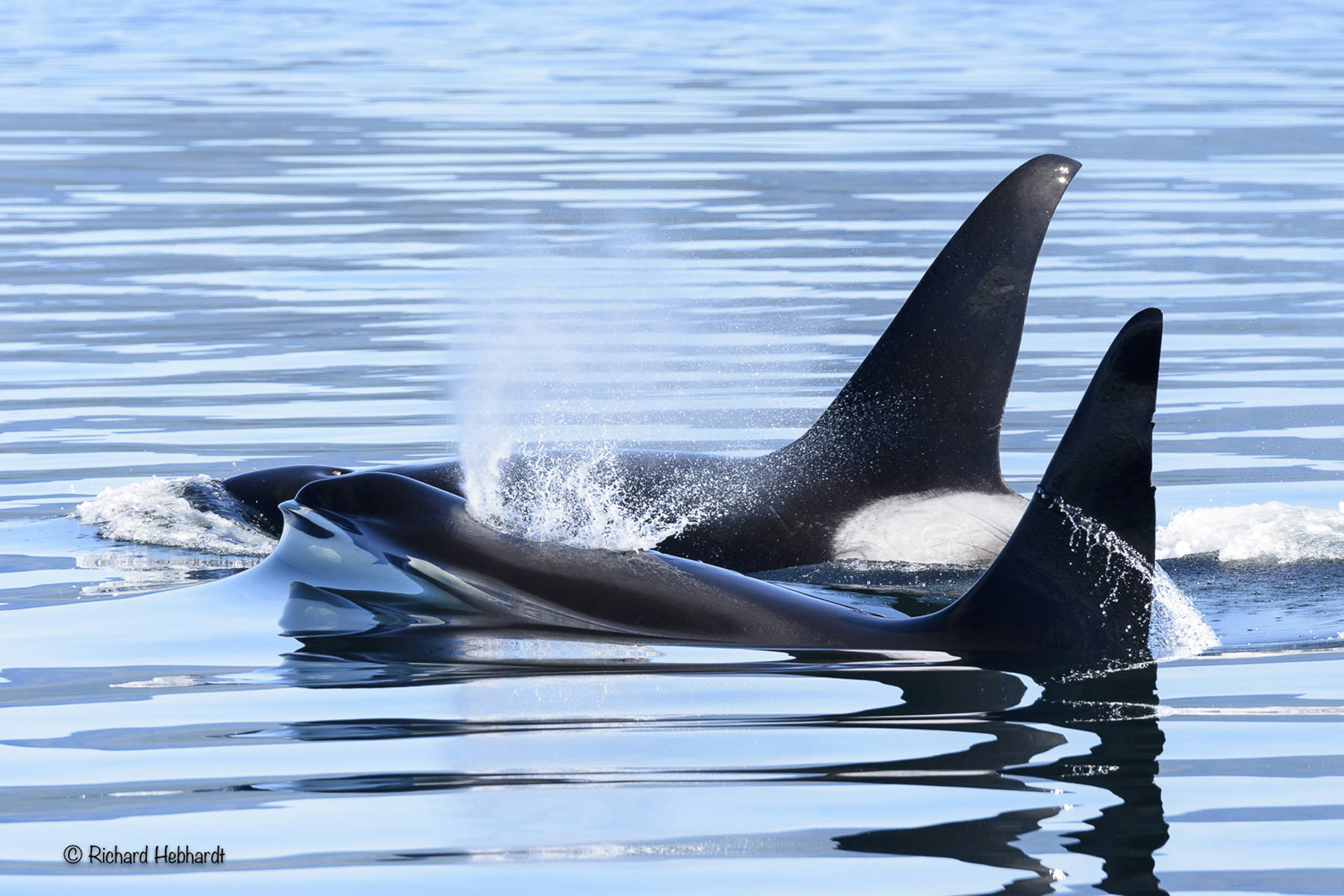On a recent trip to Kenya, Richard Hebhardt sat in a safari vehicle, partially hidden behind a tree in which hung a dead impala. He peered through his camera lens as the female leopard who had stashed the animal earlier that day paced closer, her son hanging back behind her.
“My heart just pounds,” he said of being close to the cats. “Her sensibilities, I’m sure, were ratcheted up considerably. We were there, and there was other animal life, plus the dead impala in the tree… she was just a gorgeous animal.”
As a nature photographer with a passion for photographing African wildlife, big cats like lions, cheetahs and leopards in particular, those are moments he treasures.
His nature photographs have “a bent toward conservation photography,” he said, adding “the last several years I’ve been particularly interested in the peril that many species — some select species in Africa — are unfortunately suffering due to habitat loss.”
Though Hebhardt has always had a passion for photography — his father, an avid amateur photographer, gave him his first camera when he was a kid — it’s in the last 10 years, after he retired from a career in education, that he’s been able to pursue it full time. He first came to Alaska in 1975 as a teacher in Ivanof Bay, finishing his career with a six-year stint as superintendent of the Bristol Bay School District. Now, he and his wife Sheryl live in Juneau.
“Being here in Alaska just gave added energy to that interest (of photographing nature),” he said. “We live in a very unique place on the planet. The natural beauty just knocks your socks off. As many years as I’ve been here, it still takes my breath away…. The opportunities to photograph wildlife here in Alaska at times seem endless.”
Hebhardt this year for the second time was selected to have one of his photos exhibited in the Smithsonian Museum of Natural History in Washington, D.C. as one of the winners of Nature’s Best Photography magazine’s Windland Smith Rice International Award.
His first winning photo, selected in 2014, was of sea lions in Glacier Bay, one of his favorite places to shoot. He and a friend who lives there have traveled there at least once a year for most of the last eight, he said.
“We visit all the nooks and crannies of the bays, both in the east and the west arm,” he said. “We’ve seen some extraordinary sights.”
The second photograph, taken in 2015 and selected for the award in 2017, was taken in Botswana’s Kalahari Desert.
“The word ‘iconic’ is often used in connection with images of African wildlife, or a landscape, but that (word) just struck me almost immediately. The sun was setting, and the sky was darkening, and that orb was almost a centerpiece,” he said. “I realized as the elephant was drinking, and the zebras were approaching, that it was really a captivating moment. The memory of that experience will probably last me a lifetime.”
Photographing in Africa offers particular challenges, he said. In particular, it’s difficult to take good photos after late morning and before evening, since the midday light is so bright and casts dark shadows. That’s in addition to the challenge of getting close enough to the animals to get a good photo. When he travels to Africa for images — trips that can last a month — he starts his day around 5:30 a.m. and finishes it at 7 or 7:30 p.m., he said.
Another image that stands out to him is on Kenya’s Maasai Mara plain, of the sun setting through the only acacia tree for miles.
“It seemed to me like an extraordinary gift was put right in my lap,” he said.
Among other places, he’s photographed in Uganda, Kenya, Botswana, and Zimbabwe, and has plans to go to Namibia, and to Zambia’s Luangwa Valley.
He also takes photos in Hawaii — on the big island and Kauai in particular — where he travels with his wife each year, among other places.
He’s mostly a self-taught photographer, he said.
“Just to make it to that level, I found pretty extraordinary,” he said of his recent awards. “I’m just very, very pleased, and feel very fortunate to be able to capture (those moments).”
Hebhardt has also had work displayed in the Alaska State Museum as part of the Alaska Positive exhibit, and at the Oakland Museum of California.
Though his photos are available for purchase and he’s winning awards, the motivation to photograph wildlife and wild places has always been personal, he said.
“When I revisit (an image),” he said, “it’s easy to feel the heart or the soul stirring again.”
To see Hebhardt’s second award-winning Nature’s Best photo, see the Oct. 10 Capital City Weekly or go here: http://www.capitalcityweekly.com/stories/101117/ae_1276792571.shtml
To see his first, go here: http://juneauempire.com/outdoors/2014-12-12/theres-something-about-juneau
Hebhardt also has many of his photos and more information up on his website, available here: http://richardhebhardtphotography.com/
• Mary Catharine Martin is the Capital City Weekly’s managing editor.

